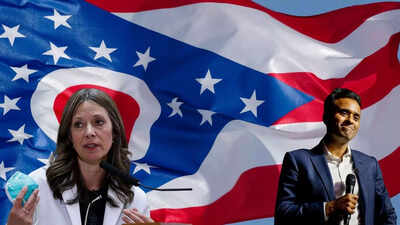
Some people seek power because they crave it. Others have it thrust upon them by a virus too small to see but large enough to shape destinies. Amy Acton falls squarely in the latter category – the child of poverty and abuse, the public health professor who became Ohio’s health director, and now the woman challenging Vivek Ramaswamy for the governorship of a state that still prays at the altar of Donald Trump.For those who’ve forgotten (or wish to), Acton was the face of Ohio’s Covid response. The “smelly kid” in school – as she once described herself – grew into the woman who told Ohioans to batten down the hatches on March 23, 2020, issuing America’s first state stay-at-home order. To her admirers, she was the Midwestern heroine who closed schools before death could enter their doors. To her detractors, she was a tyrant in a lab coat – a “medical dictator” and, to one Republican’s wife, a Nazi, because she was Jewish and told people to wear masks.Acton’s childhood reads like a Dickensian nightmare set in Youngstown: parents divorced at three, sexual abuse by her stepfather, a basement below an antique shop for a home, a tent for a winter roof. Yet she rose – accelerated medical programme, public health leadership, compassion burnished by lived trauma. When Republican Governor Mike DeWine, a Bush-era conservative, picked her in 2019 to tackle Ohio’s opioid crisis, neither realised she’d soon lead a war on a silent, mutating enemy.
Her Covid briefings with DeWine became Ohio’s daily moral instruction hour. Acton distilled complexity with clarity and compassion, peppering cold epidemiological truths with poetic determination: “This is a war on a silent enemy. I don’t want you to be afraid. I am not afraid. I am determined.” For a frightened, locked-down populace, her glossy brown waves and prominent cheekbones became symbols of hope, earning her Rosie the Riveter tributes and fan clubs with over 100,000 members.
Children dressed as her for Halloween. Nurses kept Covid scrapbooks with her face on the cover.But America’s love for saints is fleeting. By June 2020, armed protesters camped outside her home, some waving antisemitic symbols. Republican lawmakers sought to strip her powers. And when political pressure mounted to allow maskless county fair crowds, she resigned, unwilling to sign death warrants masquerading as executive orders.
Five years later, Acton is back, running for governor as Ohio’s only candidate who saw “under the hood of democracy” during the pandemic. Her pitch: moral clarity forged in crisis. Her liability: the memory of a crisis voters wish to forget.Facing her is Vivek Ramaswamy, MAGA’s smooth-talking philosopher-entrepreneur, backed by Trump and the Ohio GOP. He brands her an “Anthony Fauci knockoff” who owes every child an apology for school shutdowns.
And it’s true: lockdowns have aged badly. Surface disinfecting rituals turned out to be theatre. School closures stunted academic progress and mental health. Acton argues she acted on the best data then.
Critics argue intention doesn’t erase consequence.Yet beneath the epidemiological debates lies Acton’s deeper challenge: overcoming Ohio’s Trumpian transformation. This is the state that made JD Vance a senator and might make Ramaswamy governor.
Even within her party, she faces Sherrod Brown and Tim Ryan in the primary – two Democratic warhorses who see in Acton both potential and peril.For every voter who sees her as Ohio’s Florence Nightingale, another sees her as Nurse Ratched. For every nurse who asks her to sign a Swiss Cheese Model printout – her famed pandemic visual aid – there’s a father who curses her name over lost wages and lonely funerals.But Acton is undeterred. Her life taught her to turn trauma into service. From squeaky new shoes in seventh grade court testimony against her stepfather, to ballet flats in park meet-and-greets today, she carries the conviction that leadership is about “maximising the best outcomes with what you have as your reality.”In a state divided between populist rage and pandemic fatigue, Amy Acton’s candidacy is a referendum on more than lockdowns. It asks Ohio: Do you want the world as it was, or as it should be?

 5 hours ago
44
5 hours ago
44




























 English (US)
English (US)